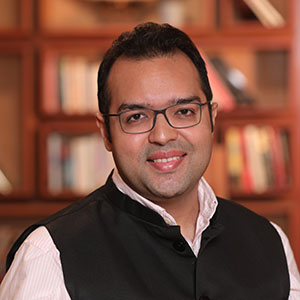It’s a humid afternoon in Chennai, and the office of a nonprofit working on education reform is buzzing with activity. A project lead is on the phone with a district education officer, prepping for the rollout of a teacher training module across government schools. Across the room, a partnership manager negotiates with a private tech firm and district officials to pilot a new model for community-led school monitoring and improvement. Nearby, a measurement, evaluation, and learning team combs through feedback from teachers and families in the community to identify patterns and problems that could inform their next steps. And down the hall, the founder prepares for a coalition meeting with civil society allies, state government representatives, and private partners to co-create a road map to improve educational learning outcomes.
In our years of working with nonprofits, we have seen similar scenes, though stylised here, unfold in a variety of organisations engaged in systems-change work. They reflect the everyday complexity and commitment required of organisations targeting the root causes of social and environmental issues and shifting the underlying structures that often exacerbate inequities. Progress is often slow and nonlinear. Success isn’t measured by outputs like workshops held or students reached, but rather by harder-to-measure shifts, such as how systems capabilities strengthen over time. This kind of work demands deep collaboration across government, civil society, communities, and the private sector, as well as a long-term vision that may take a decade (or more) to realise.
Over the past year, The Systems Thinking Collective—a community of more than 25 nonprofits across India spanning sectors like education, health, livelihoods, climate, and gender—has regularly come together to discuss what it takes to do systems change work.1 Through shared learning and honest conversations about struggles and successes, the community has surfaced five critical mindsets that enable changemakers to move beyond delivering services to driving deep and lasting population-level change.
Mindset 1: Committing to the Challenge for the Long Haul and at the Scale of the Problem
When Lend a Hand India (LAHI) began its work more than two decades ago, its goal was ambitious: to integrate vocational education into mainstream schooling. The organisation aimed to create pathways for young people, particularly from underserved backgrounds, to build meaningful livelihoods across India. However, change at this scale doesn’t happen overnight. Over the years, LAHI collaborated with central and state governments, civil society organisations, and private partners to introduce vocational education as a core part of the school curriculum. Its model extended beyond textbooks to include establishing vocational labs, recruiting and upskilling trainers, facilitating internships, and providing placement support for students entering the workforce.
LAHI’s work was recently recognised in the Economic Survey 2023-24 published by India’s Ministry of Finance – an acknowledgement of how a sustained, systems-oriented effort can transform public services at scale. But this recognition wasn’t the result of a single project or pilot. It came after years of persistence, trust-building, and adapting to the evolving needs of public institutions. LAHI didn’t begin its journey with access to long-term funding. Like many nonprofits, it had to make the case for systemic work while navigating challenges that included short funding cycles and the need to demonstrate early wins to funders. LAHI stayed the course, steadily building credibility, evolving its models, and keeping its focus on the long term.
For nonprofits seeking to change systems, LAHI’s journey highlights a crucial truth: tackling root causes demands long-term vision and designing programmes that are scalable, resilient, and often deeply embedded in public sector institutions. Because this work doesn’t follow quarterly timelines, progress can be slow and nonlinear. But for those who think long term, and are willing to build patiently, layer by layer, the impact can be transformative.
Mindset 2: Stewarding Multiple Stakeholders Across the Moving Parts of the System
PlanetRead’s journey towards systems change began with a deceptively simple idea: same-language subtitling (SLS) of mainstream video entertainment to improve reading skills. However, as the organisation grew, its founder, Brij Kothari, realised that scaling the organisation’s impact wasn’t just about refining the innovation. Rather, it was about understanding the system it needed to move through. This shift—from focusing on a solution to appreciating the many interconnected forces shaping India’s education and media ecosystems—was pivotal, transforming his approach from that of an innovator to a systems thinker.
Kothari began engaging with stakeholders across (and beyond) the education ecosystem, including government officials, disability rights advocates, media professionals, and legal experts. In this way, PlanetRead could adapt its strategy to respond to shifting priorities. Its commitment to this cross-sector collaboration and reflection resulted in the widespread adoption of SLS by leading media platforms, bringing accessible, literacy-enabling content into millions of homes across India.
Appreciating the dynamic and interconnected nature of systems is essential for changemakers and leaders. A mosaic of actors with varying mandates, constraints, and incentives can influence systems. Thus, systems-change work requires a full view of the landscape, including the political economy in which you are operating, an openness to other perspectives, and the ability to identify the right coalition at the right time. It also requires humility, because no one stakeholder has all the answers.




